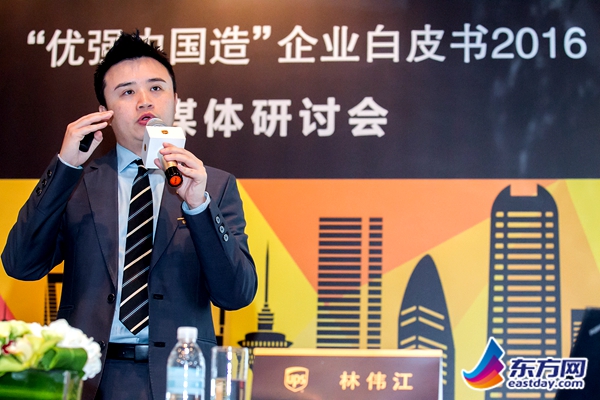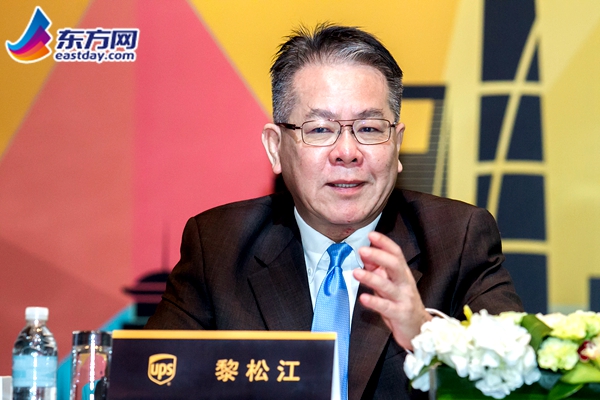Shanghai, August 10- UPS announced today the release of the 2016 Made in China 2.0™also known as the MiC 2.0™ Report, which provides a clear way forward for China’s manufacturing sector as it faces growing headwinds. In order to remain competitive amidst China’s economic transformation, Chinese export manufacturers can learn from MiC 2.0™ Leaders who have implemented successful strategies to achieve better business performance and growth.
According to the MiC 2.0 report, export manufacturers are more pessimistic than before, with 29% of the companies saying the economy is worse than in 2014, up from 16%. Chinese export manufacturers are facing challenges on both demand and supply: two of the most commonly-cited challenges are increasing competition from Chinese companies (39%) and decreasing demand from Chinese customers (37%).
“Against a backdrop of intensifying pressures in China, it is clearer now than before that the future survival and success of export manufacturers would depend on their willingness to make changes to the way they do business,” said Richard Loi, President of UPS China. “Offering a lower price is not the optimal solution to remain competitive.Higher quality products (83%), showing an understanding of the customers’ business (82%) and offering a faster and more efficient supply chain (82%) are the top reasons for customers to switch suppliers. This indicates a need to shift from low-prices to offering higher quality products and providing value-add by building closer partnership with customers.”

Arthur Lam, Director of Marketing,UPS China shared important discoveries from the report.
Much can be learned from the MiC 2.0 Leaders – leading companies that have adopted strategies and logistics for developing foreign market growth. MiC 2.0 Leaders arecompanies in the top 8% of the MiC 2.0 Readiness Index, which assesses Chinese export manufacturers’ preparedness for the future of their industry.
MiC 2.0 Leaders have outperformed other export manufacturers in productivity, market share, revenue and profit, are more likely to be on a growth trajectory and are7% less likely to see a decline in their business. They provide a model of success for other Chinese export manufacturers, who can learn from the following growth strategies:
Wider geographical footprint
97% of MiC 2.0 Leaders sell to at least one market in Asia, and are more focused than other export manufacturers on key markets in Asia and Europe such as Thailand (161%), Hong Kong (151%), France (126%), Indonesia (116%) and the UK (115%). Leaders are also six times more likely to sell to Oceania and two times more likely to sell to Eastern Europe.
Serving a more diversified customer base of both B2B and B2C customers
Two-thirds of MiC 2.0 Leaders (64%) sell to a mix of both B2B and B2C customers while other export manufacturers are more focused on B2B manufacturing, which is associated with lower-margin and lower-quality production.
Understanding the role of logistics
MiC 2.0 Leaders understand that investing in logistics can add value to key business objectives. They are three times more likely to recognize that logistics can play a highly important role in reducing costs and growing sales, and two times more likely to enhance the customer experience.
Priorities for the future
MiC 2.0 Leaders are significantly more likely than other export manufacturers to rate improving logistics (170%) and growing sales (168%) as highly important priorities for future success.
Selling finished vs unfinished goods
MiC 2.0 Leaders are 63% less likely than other export manufacturers to sell mainly unfinished goods, indicating a move toward selling more finished goods as Leaders focus on product innovation and the move up the value chain.
Identifying the impact of emerging trends
MiC 2.0 Leaders are more likely to recognize that nearshoring (41%), industry e-commerce (29%) and consumer e-commerce (24%) are emerging industry trends that will have a big impact on their business.

“As a global trade enabler and leader in integrated logistics solutions, UPS is well-positioned to help export manufacturers in China succeed and export globally,” Loi added, “UPS is implementing service enhancements that includelater pick-up time and faster time-in-transit in key cities such as Beijing, Shanghai and Tianjin.”
In second and third tier cities, UPS is also expanding its presence to meet the needs of exporters. In 2015, UPS expanded into 21 new cities as part of its long term growth strategy in China. These cities are primarily in the Jiangsu, Shandong, Zhejiang and Guangdong provinces and Chongqing Municipality.
Loi noted that UPS’s 2016 MiC 2.0 report is a timely reminder that the necessity for change in the way export manufacturers conduct their businesses remains great, as China undergoes economic transformation.
